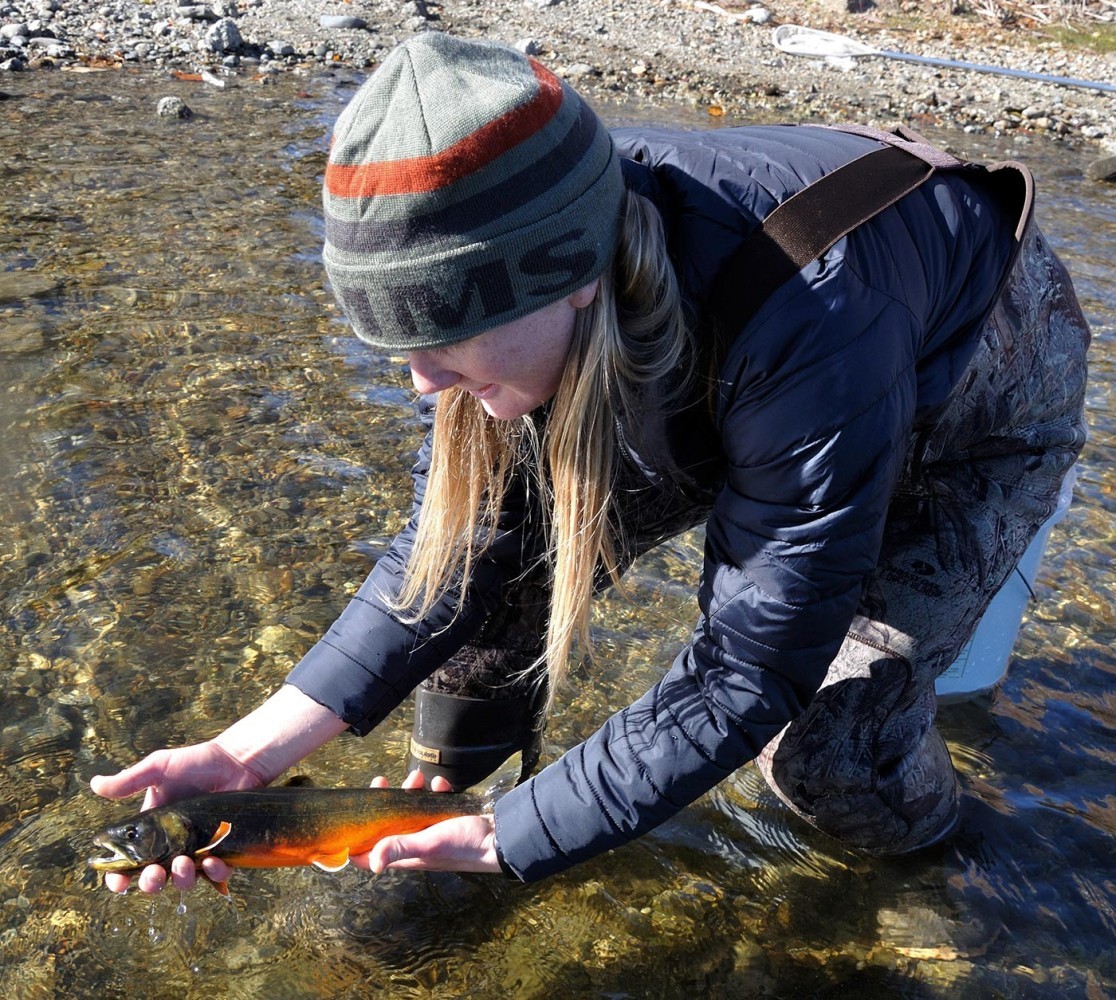
The Confusing History of New England’s Arctic Char, and Current Efforts to Conserve Them
My earliest memory of fishing is of my father baiting a hook for me with a small piece of slab bacon as I tried to catch a few bluegills. I was successful that day, and my father’s pride added to the moment – I was a fisherman. Years later, my appetite for fishing provided ample reason to ditch a day of high school and drive nearly 300 miles to the annual Naples Creek Rainbow Trout Derby in the Finger Lakes region of New York. I had heard that people caught trout up to 10 pounds during the derby and had to see it for myself. I didn’t fish that day; I just enjoyed watching the lucky anglers bring in their fish, get them weighed, and then have their catches recorded on a display board for all to see. My passion for fish eventually became a controllable diversion, but I remain curious and still enjoy learning more – especially when it comes to an unusual or unexpected fish story. The story of the Arctic char qualifies as both. The char, a close relative of lake and brook trout, colonized portions of interior New England after the last glaciers melted 10,000 to 12,000 years ago. That makes them a relic of the Ice Age and likely the first fish to colonize the cold, deep ponds and lakes of what is now northern New England. Not as widespread or as conspicuous as the migrating Atlantic salmon, shad, or alewives that historically fed the region, Arctic char were largely overlooked by early residents.
As sportfishing gained popularity in northern New England, people began to pay closer attention to fish. Commissions were established in Vermont, New Hampshire, and Maine to manage and restore freshwater stocks. A critical step in their work was to catalog all types of fish and understand their life histories. And this is where things started getting confusing. In 1914, William Converse Kendall, an ichthyologist (fish biologist) affiliated with the US Bureau of Fisheries, compiled comprehensive descriptions of all the known forms of salmon, trout, and char in the region. Biologists who classify animals, like Kendall, are often considered either “lumpers,” who tend to place organisms into a few large groups based on common characteristics, or “splitters,” who tend to divide organisms into many groups by relying on features that are unique. Kendall was a splitter. As a result, he catalogued the fish known colloquially as the “blueback trout” (what we today know as the Arctic char – the blueback moniker would have come from the solid blue band on the char’s spine, as opposed to the worm-like mottling on a brook trout’s blueish back) separately from a fish known colloquially as the white, golden, or Sunapee trout, which was “discovered” in Lake Sunapee in 1881. Kendall, noting the large size and brilliant autumn coloring of the Sunapee fish, figured they must be a different species. Other biologists argued that Sunapee trout were nothing more than the grown-up blueback fingerlings that the New Hampshire Fish Commission had released into Lake Sunapee in 1878.
Kendall seemed to be vindicated when fish identical to Sunapee trout were subsequently caught in Big Dan Hole Pond in eastern New Hampshire, Averill Lake in northeast Vermont, and Floods Pond in Maine. Because there were no known releases of blueback trout in those watersheds, fish in all four lakes were officially recognized as Sunapee trout.
By 1885, Sunapee trout weighing three to eight pounds were becoming common in their namesake waterbody. State biologists found a rocky shoal in Lake Sunapee where adult trout congregated to spawn in late autumn, and in the years that followed, they captured spawning fish, collected eggs and milt (sperm), and raised fish in hatcheries to restock. The visual beauty of the Sunapee trout during the spawning season, with its deep-crimson belly and orange or golden flanks, got the attention of anglers, and the fish was even featured in the October 1950 issue of National Geographic Magazine. Because of its popularity, attempts were made to establish other populations of Sunapee trout in New Hampshire, but none succeeded.
By the mid-1950s, populations in Lake Sunapee were in decline, and they would eventually vanish as they had in other lakes where they had been seen throughout New Hampshire and Vermont. This is largely because other game fish that eat young Sunapee trout, including lake trout and landlocked salmon, had been intentionally or inadvertently introduced.
Sunapee trout managed to hang on in Floods Pond, which served as a municipal water source for the city of Bangor, Maine, and had been left largely undisturbed. In the 1970s, Fred Kircheis of Maine’s Department of Inland Fisheries and Wildlife began a career-long effort to assure the survival of Sunapee trout. Among his first actions was to establish additional populations in case conditions at Floods Pond deteriorated. Eggs were collected, and young fish and some adults were released into other aquatic systems. Eventually, those releases yielded two naturally reproducing populations, and Sunapee trout were no longer “in one basket.”
Next, Kircheis launched several studies to examine the relationship of Sunapee trout to other fish in the region. As DNA-based techniques advanced, so did the understanding of Sunapee trout. By the early 1980s, Kircheis and his collaborators confirmed what many had suspected all along: Sunapee and blueback trout were the same species, and both were Arctic char.
A Chameleon Among Fish
Arctic char are widely distributed throughout the Arctic and subarctic regions of North America, Europe, and Asia. But outside of Alaska, Maine is the only state with a native population. Throughout their large geographic range, Arctic char occupy a wide variety of aquatic habitats, including lakes, streams, and rivers. Some char divide their time between the open ocean and inland rivers. As habitat generalists, they display considerable dietary variability, much of it associated with differences in body size. For example, a dwarf form of char may be only four or five inches long as a mature adult. This char is restricted to deep lakes, where it consumes small shrimp-like invertebrates and insects. When char spend time in the ocean or live in more productive lakes, they can reach 30 inches or more and exceed seven pounds, a result of their feeding on smaller fish. The color of char also varies substantially, from a uniform silver among dwarf varieties to a deep red with numerous spots among larger forms. Genetic studies have revealed that, in most cases, these different forms are a consequence of adaptation to local conditions.
Perhaps the best example of the “flexibility” of char is the way fish from Floods Pond changed after being placed into a different lake. Researchers at the University of Maine examined the body size, shape, and food habitats of char in Long Pond, Maine, 25 years after fish from Floods Pond were introduced there. That timespan represents about six generations. The fish in Long Pond were smaller and had substantially different body dimensions than fish in Floods Pond. These differences seemed to be a direct consequence of diet, with fish in Long Pond relying primarily on insects and the fish in Floods Pond frequently eating small fish. Arctic char are indeed masters of making the most of what’s available. Johan Hammar, an accomplished fisheries biologist from Sweden who compared fish populations in Newfoundland, Canada, found that the adaptability of char is also affected by what other fish are present. In isolated lakes where char are the only fish present, they eat a variety of insects and other invertebrates, and even cannibalize young char. Those lakes also contain the largest char. In lakes that have more diverse fish communities, which include brook trout, Atlantic salmon, and eels, char become very specialized in what they eat and remain small. A take-home message from Hammar’s research is that char have difficulty making a living in diverse fish communities. So introducing new species of fish into a lake or pond containing char may eventually squeeze them out.
Challenges of Managing Native Fish
Perhaps the most consequential outcome of historical efforts to satisfy the demands of sport anglers was the widespread “shuffling” of fish communities. Fish commissioners were encouraged to bring in fish from other states and regions in hopes they might increase productivity in a specific lake or river. Those efforts had unintended consequences, which included the reduction or elimination of native fish. In his 1999 book, The Bassing of New Hampshire, Jack Noon details the many attempts to release different species of fish into New Hampshire waters with hopes for finding “the right fish.”
Lake Sunapee stands as probably the most extreme of those efforts. To start, landlocked salmon from Maine were released into Lake Sunapee in 1867. Although popular among anglers, landlocked salmon had difficulty reproducing there, so regular stockings were required to maintain the population. Subsequent releases included smelt (to feed the salmon), smallmouth bass, whitefish, walleye, blueback trout, brown trout, rainbow trout, grayling, chinook, coho, and eventually Western (chinook, coho, and chum) salmon. West Coast salmon were very attractive to fish commissioners because they grow large. In their native habitats, these fish are anadromous: young fish move from the freshwater streams where they are born to the open ocean, where they feed until they are adults and ready to reproduce. Some, like adult Pacific salmon, then return to their natal river systems to spawn and die. They couldn’t do this in the Lake Sunapee system, so self-sustaining populations were never achieved. Still, the rapid growth of chinook salmon in particular made them a favorite among anglers, so they were stocked regularly for at least 30 years.
Smallmouth bass are a good example of an introduced species that did take to their new surroundings. Native to Lake Champlain in Vermont and much of the Mississippi River basin, smallmouth bass were introduced only once to Lake Sunapee, in 1868. They quickly established a self-sustaining population in the lake, grew fast by eating smelt and other small fish, and became very popular among local and visiting anglers. That success led to the stocking of over 140 lakes and ponds across New Hampshire with smallmouth bass by 1880. But not everyone saw the successful establishment of smallmouth bass as a complete positive. Bass quickly populated the Connecticut and Merrimack Rivers and their tributaries and may have limited the restoration of native shad and Atlantic salmon in those rivers. Bass were also suspected of suppressing local brook trout populations, prompting one fish commissioner in 1908 to lament that some waters should have been reserved for trout and salmon.
Not all fish introductions are officially planned and systematically executed. Some releases have been unintentional – as modest as the dumping of a bait bucket into a lake or river at the end of a day of fishing. Local anglers may also intentionally add a new fish to a favorite fishing spot, hoping that it will take. The distributions of yellow perch, pickerel, hornpout, sunfish, cusk, and rock bass have greatly expanded throughout New England by such unofficial releases.
Recently, unsanctioned releases of smelt into several ponds in Maine (Big Reed, Wadleigh, and Bald Mountain) have caused worrisome declines in char populations. Perhaps the smelt were leftover bait fish, or maybe anglers thought that adding them would provide a new food source for char. Regardless of the reason, smelt quickly became serious competitors and predators of young char. State biologists eventually made the difficult decision to eliminate smelt from Big Reed Pond. Led by Frank Frost, biologists first captured adult char and brook trout and placed them in a hatchery, where they produced additional fish for subsequent releases. Next, the pond was treated with Rotenone to kill all the remaining fish. This may seem severe, but it was seen as the only effective method of eliminating the introduced smelt. Once aquatic insects recolonized Big Reed, char and brook trout were reintroduced, and reproduction by both fish has been observed. A similar reclamation was undertaken at Wadleigh Pond, but its recovery is uncertain. Bald Mountain Pond may be too large to effectively remove the smelt.
Will Arctic char survive in New England?
Public attitudes toward fishing are changing. Although stocking of trout and salmon is still a major activity (and expense) of state fish and wildlife agencies throughout New England, the attitudes of anglers suggest that some are moving away from the “put-and-take” fishing experience. In 2005, Maine’s legislature passed the State Heritage Fish law, which recognizes and protects the state’s wild, self-sustaining brook trout. In 2007, several Arctic char ponds were added to the heritage fisheries list. Currently, there are nearly 600 Maine lakes and ponds that have been designated as State Heritage Fish waters, and these are not stocked with hatchery-raised fish; thus, they depend on reproduction among wild fish. Perhaps the most important management action for char is that the use of bait fish has been prohibited in heritage fisheries.
Given the potential threats to char in Maine, monitoring existing populations has become essential. Since 2002, Professor Michael Kinnison and his graduate students at the University of Maine have been tracking the population in Floods Pond using capture-and-tagging methods. Unfortunately, such methods aren’t practical in most of the other char ponds because of their remote locations. To overcome that, Kinnison and doctoral student Brad Erdman have teamed up with the Maine chapter of Trout Unlimited to develop a technique that can be used to measure char abundance and detect unwanted fish introductions in hard-to-reach locations. Their approach relies on “eDNA,” or environmental-DNA analysis. Water samples are collected at a pond or lake and processed to extract any biological tissue that contains DNA. As most fans of TV crime dramas know, all living animals and plants leave genetic evidence in the environment. For fish, this may be bits of skin, scales, or even smaller cell samples. Kinnison and Erdman distill and identify the DNA contained in the water collected at remote ponds and lakes to estimate the abundance of char and determine the presence of other fish. In addition to monitoring potential unwanted fish invasions, the eDNA approach may allow the researchers to monitor any future effects of climate change on Maine’s char.
Public outreach and education are essential for char conservation efforts to succeed. In 2017, the Native Fish Coalition (NFC) was formed by anglers in Maine who were concerned with the future of native fish populations. The mission of NFC is to “protect, preserve, and restore native fish.” By native fish, the NFC means fish that naturally occur in a specific body of water. Smelt are native to Maine, but they do not occupy every watershed in Maine, and as fluctuating char populations have demonstrated, releasing smelt or other new fish into a pond or lake can create unintended consequences. Interest among anglers in preserving native fish populations is increasing. Since its formation two years ago, NFC has formed chapters in Maine, New Hampshire, and Vermont. In addition to promoting char, NFC members are working for the restoration of Atlantic salmon, raising public awareness of sea-run brook trout, and advocating for keeping bait fish and hatchery-raised fish out of wild brook trout waters. Recent conservation efforts for char in Maine have increased their profile among sport anglers in New England and beyond. For some, Maine char have become a “bucket-list fish.” Although such near-celebrity status may seem a bit extreme, it may also aid biologists working to keep this legendary fish a reality. I hope so.


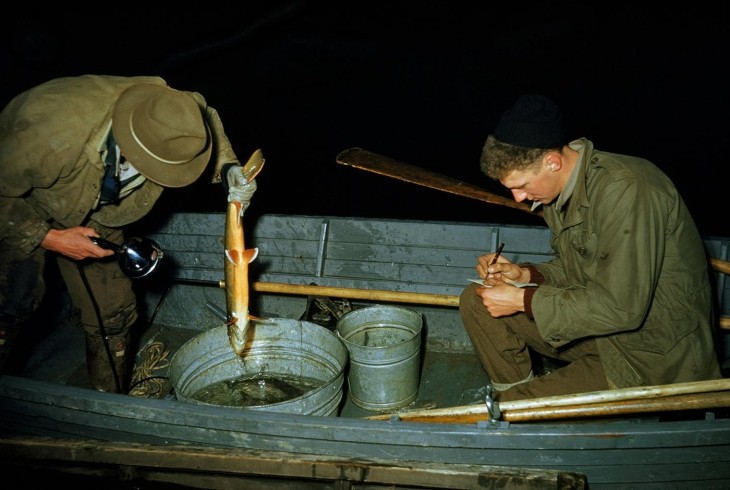
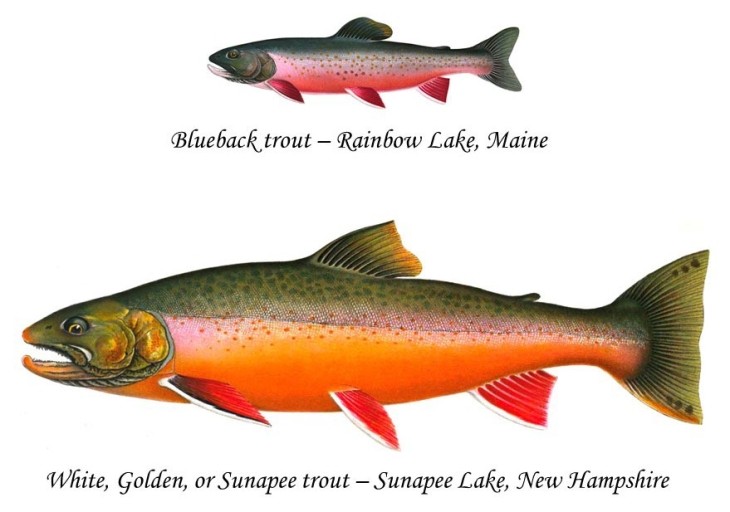
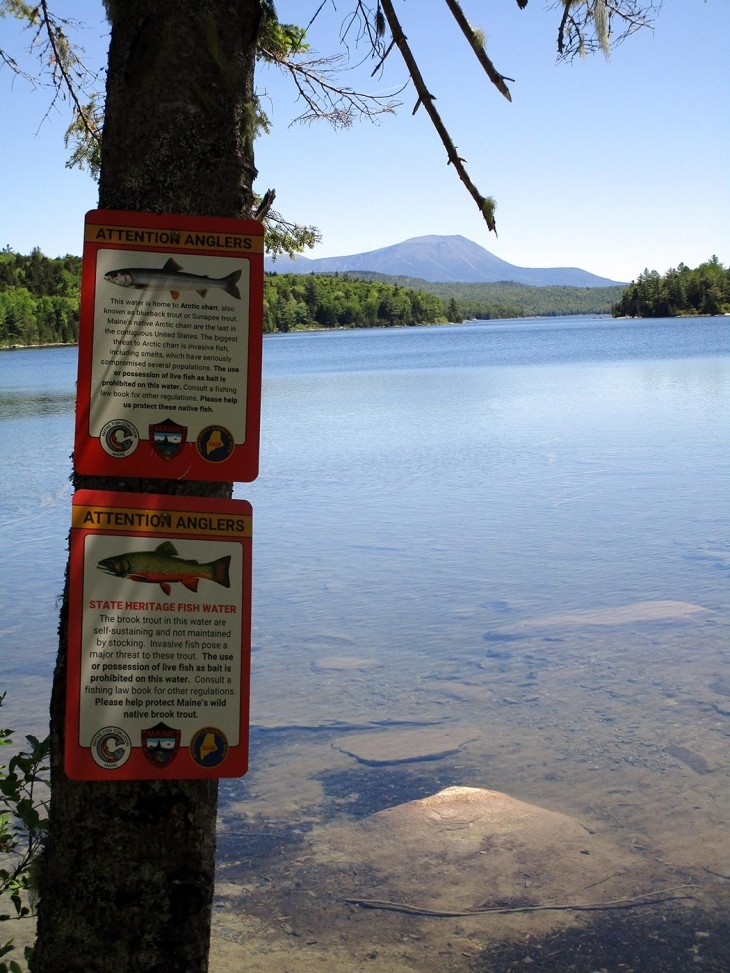

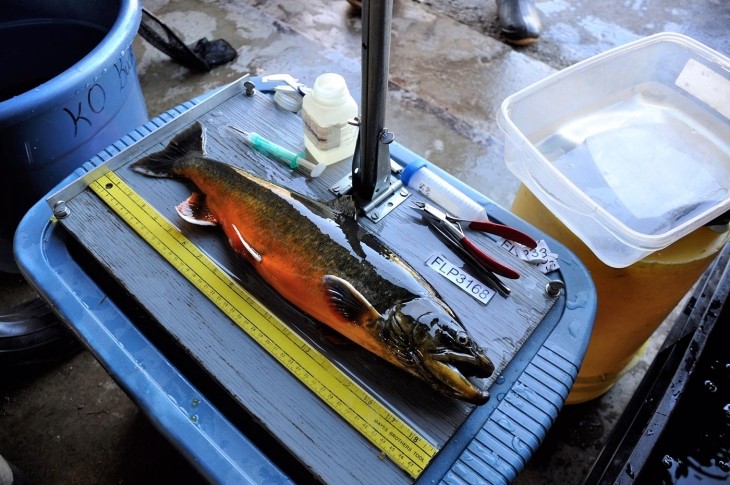
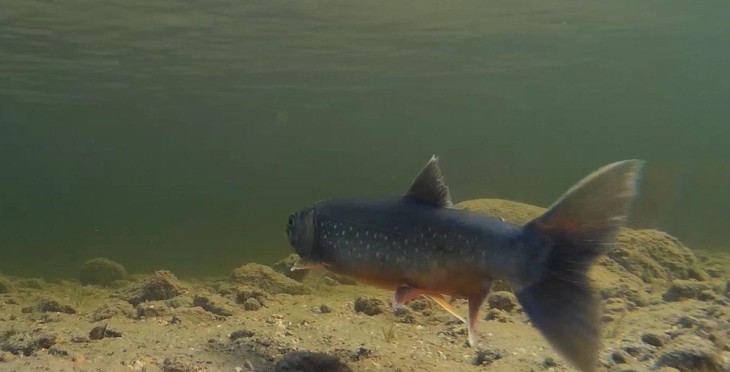
Discussion *